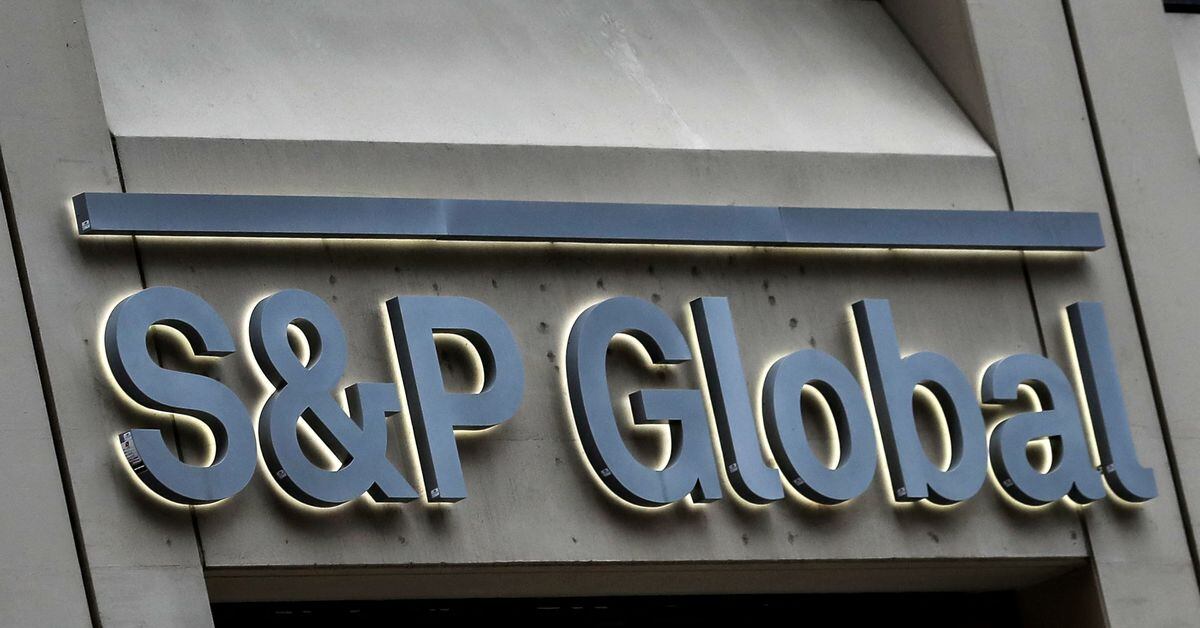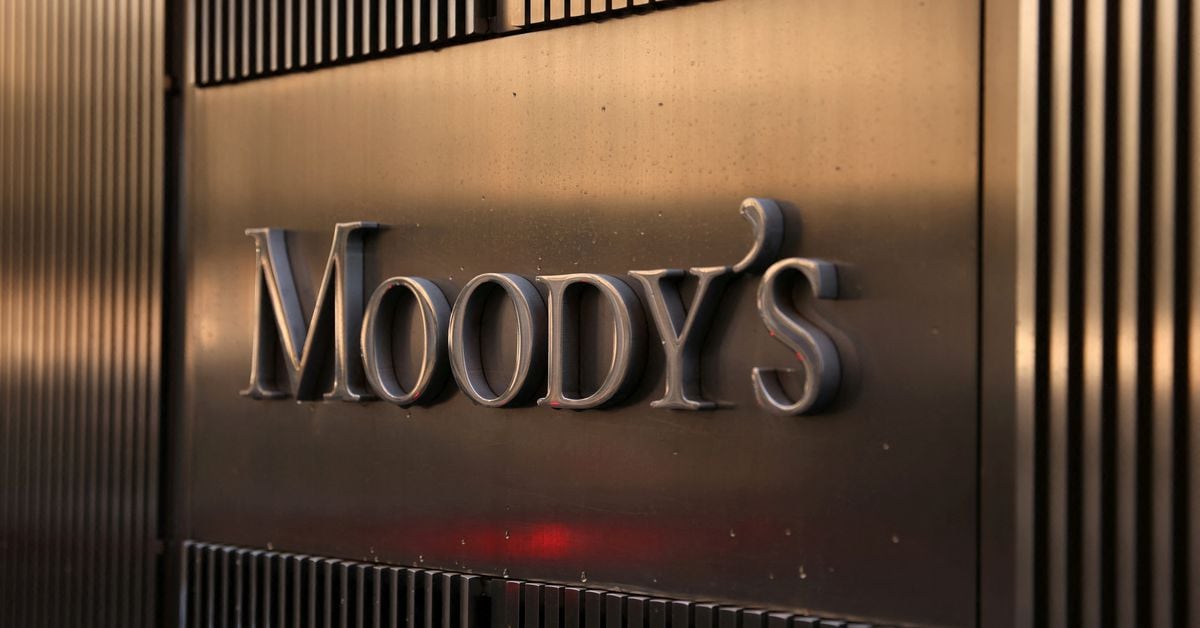-
Be sure to read this post! Beware of scammers. https://www.indianagunowners.com/threads/classifieds-new-online-payment-guidelines-rules-paypal-venmo-zelle-etc.511734/
You are using an out of date browser. It may not display this or other websites correctly.
You should upgrade or use an alternative browser.
You should upgrade or use an alternative browser.
Second Largest Bank Failure in U.S. History…
- Thread starter Ingomike
- Start date
The #1 community for Gun Owners in Indiana
Member Benefits:
Fewer Ads! Discuss all aspects of firearm ownership Discuss anti-gun legislation Buy, sell, and trade in the classified section Chat with Local gun shops, ranges, trainers & other businesses Discover free outdoor shooting areas View up to date on firearm-related events Share photos & video with other members ...and so much more!
Member Benefits:
manifest destiny
Master
Yeah, I was too young in 1980 to get a mortgage but when I read of 16-18-20%+, it blows my mind. It sounds so completely unrealistic. I'll note that home buying was a bit different back then. Buyers usually put 20% down or more. The house purchase price was also sub six figures. Most buyers remained in that home. The interest rates and dollars might have relative parity but the actual experience for buyers is hard for me to compare.7% is still low compared to where rates were historically.
My first house in the mid 90s was 9%, but as you said, it was also well under 100K. When rates went lower, people started buying huge houses. That took us to the housing crash.Yeah, I was too young in 1980 to get a mortgage but when I read of 16-18-20%+, it blows my mind. It sounds so completely unrealistic. I'll note that home buying was a bit different back then. Buyers usually put 20% down or more. The house purchase price was also sub six figures. Most buyers remained in that home. The interest rates and dollars might have relative parity but the actual experience for buyers is hard for me to compare.
Do keep in mind, FEW EVER GOT A LOAN AT THOSE RATES. Few could afford it. Homes went unsold back then. It has become a folk story.Yeah, I was too young in 1980 to get a mortgage but when I read of 16-18-20%+, it blows my mind. It sounds so completely unrealistic. I'll note that home buying was a bit different back then. Buyers usually put 20% down or more. The house purchase price was also sub six figures. Most buyers remained in that home. The interest rates and dollars might have relative parity but the actual experience for buyers is hard for me to compare.
I‘m sure there will be a post that says they did but I am skeptical as few could afford it as a practical matter. Those that could were usually executives that had corporate relocation packages to assist them.
Then how did people buy houses?Do keep in mind, FEW EVER GOT A LOAN AT THOSE RATES. Few could afford it. Homes went unsold back then. It has become a folk story.
I‘m sure there will be a post that says they did but I am skeptical as few could afford it as a practical matter. Those that could were usually executives that had corporate relocation packages to assist them.
Do keep in mind, FEW EVER GOT A LOAN AT THOSE RATES. Few could afford it. Homes went unsold back then. It has become a folk story.
I‘m sure there will be a post that says they did but I am skeptical as few could afford it as a practical matter. Those that could were usually executives that had corporate relocation packages to assist them.
Our first home we bought in late 80s. Our mortgage rate was something like 9 or 10%. And we thought that was awesome, having seen rates fall from near 20% over the decade. There's no way we could have afforded a decent home at 18%.
We had the home built in a cookie cutter subdivision. I remember pressuring our builder to hurry up and get it done so we could close and lock our rate. We were paranoid that the rates would go back up.
Now a 30-year fixed rate is averaging 8%. I refinanced my previous home back in mid 2000's for something like 3.5% so 8 seems absurd. Yet we paid over 9 on our first home and thought that was low. Everything's relative to what you're used to I guess.
I think the point is that during that time of hyper-inflated 18-20% rates, not a lot of first-time home buyers were in the market. Maybe if you had a home with inflated equity, you could afford the rates. Or if you're wealthy.Then how did people buy houses?
One factor in the housing crash is that the banks lowered their requirements for folks to get loans. IIRC it was in-part due to a Clinton administration change of policy. It is scary to think that this is what is happening today. https://abcnews.go.com/Business/credit-score-home-mortgage-costs/story?id=98868025My first house in the mid 90s was 9%, but as you said, it was also well under 100K. When rates went lower, people started buying huge houses. That took us to the housing crash.
It was a Clinton policy but Bush doesn't get off the hook. He had two terms to **** can that nonsense and didn't do it because of "compassionate conservatism" whatever the **** that is. I think it just means Republicans acting like Democrats, which is NOT compassionate and definitely NOT conservatism.One factor in the housing crash is that the banks lowered their requirements for folks to get loans. IIRC it was in-part due to a Clinton administration change of policy. It is scary to think that this is what is happening today. https://abcnews.go.com/Business/credit-score-home-mortgage-costs/story?id=98868025
First off many didn’t, back then mortgages were assumable so that was done quite a bit, and folks borrowed from each other. People just didn’t move much back then either. They didn’t change jobs as often and once they bought a house they tended to stay there, they didn’t move up like people today.Then how did people buy houses?
manifest destiny
Master
2008 = NINJA loans.
dieselrealtor
Master
Memories I have of the mid-late 80's in OK, I believe HUD was the largest property owner in the US, lots of VA foreclosures as well. Brick or partial brick 3/2/2 (3 bedroom/2 bath/2 car garage) 1200-1500sf, around $20k-$30k in average neighborhood. I had the opportunity to buy a 3/2/2 foreclosure for around $18k-$20k. As a teenager'ish it seemed like a lot of money & huge commitment at that time.
18% wasn't a huge amount on that much of a mortgage. I was not a broker at that time but remember looking, the mother of a friend of mine was buying about 1 home a month for some time. Developed quite a portfolio of rental property in the downturn.
Time may very well prove that $200k'ish for an average home looks similarly as cheap as the present is looked back on in future history.
It is my belief that everyone should own their own home & that all property tax should be repealed, forever.
18% wasn't a huge amount on that much of a mortgage. I was not a broker at that time but remember looking, the mother of a friend of mine was buying about 1 home a month for some time. Developed quite a portfolio of rental property in the downturn.
Time may very well prove that $200k'ish for an average home looks similarly as cheap as the present is looked back on in future history.
It is my belief that everyone should own their own home & that all property tax should be repealed, forever.
You mean that the president at the time didn't offer to "forgive" those loans to military veterans?Memories I have of the mid-late 80's in OK, I believe HUD was the largest property owner in the US, lots of VA foreclosures as well. Brick or partial brick 3/2/2 (3 bedroom/2 bath/2 car garage) 1200-1500sf, around $20k-$30k in average neighborhood. I had the opportunity to buy a 3/2/2 foreclosure for around $18k-$20k. As a teenager'ish it seemed like a lot of money & huge commitment at that time.
18% wasn't a huge amount on that much of a mortgage. I was not a broker at that time but remember looking, the mother of a friend of mine was buying about 1 home a month for some time. Developed quite a portfolio of rental property in the downturn.
Time may very well prove that $200k'ish for an average home looks similarly as cheap as the present is looked back on in future history.
It is my belief that everyone should own their own home & that all property tax should be repealed, forever.
manifest destiny
Master
I was gonna point this out in an earlier thread. At some point home cost and interest rates cross. Somwhere lower home prices at higher rates equals higher home prices at a lower rate. I'm not sure where that point is though. Still for me the psychological aspect of paying 20% on a home loan sounds outrageous. I realize peeps did it but sounds implausible. I purchased my last home as a short sale at $152 when most comps in that 'hood were $170ish. When I look now at that neighborhood the homes are going for mid 3's.18% wasn't a huge amount on that much of a mortgage.
JPMorgan Jumps After Blowing Away Expectations, Raises Guidance Thanks To First Republic Collapse | ZeroHedge
ZeroHedge - On a long enough timeline, the survival rate for everyone drops to zero
Reported revenue of $41.3BN and Adj. Revenue $42.40BN, both beating consensus est of $39.34BN, both record high
- This was boosted by a record $21.8 billion in net interest income, but it was the massive $2.7 billion gain from the First Republic taxpayer gift that really sent JPM soaring.
manifest destiny
Master
Remember when stocks and investments were tied to business performance? The modern investment market is more akin to a riverboat casino. Betters betting on betters who made bets. Unreal.

Shares of US banks drop after S&P downgrades some ratings
Shares of several U.S. banks fell on Tuesday, the day after ratings agency S&P Global followed Moody's in cutting its credit ratings on some regional lenders with high commercial real estate (CRE) exposure.
ug 21 (Reuters) - S&P Global on Monday cut credit ratings and revised its outlook for multiple U.S. banks, following a similar move by Moody's, warning that funding risks and weaker profitability will likely test the sector's credit strength.
S&P downgraded the ratings of Associated Banc-Corp (ASB.N) and Valley National Bancorp (VLY.O) on funding risks and a higher reliance on brokered deposits.
It also downgraded UMB Financial Corp (UMBF.O), Comerica Bank (CMA.N) and Keycorp (KEY.N), citing large deposit outflows and prevailing higher interest rates.
A sharp rise in interest rates is weighing on many U.S. banks' funding and liquidity, S&P said in a summarized note, adding that deposits held by Federal Deposit Insurance Corp (FDIC)-insured banks will continue to decline as long as the Federal Reserve is "quantitatively tightening."
The rating agency also downgraded the outlook of S&T Bank and River City Bank to negative from stable on high commercial real estate (CRE) exposure among other factors.

Moody's downgrades US banks, warns of possible cuts to others
Report comes against backdrop of tightening monetary conditions.
he agency also changed its outlook to negative for eleven major lenders, including Capital One (COF.N), Citizens Financial (CFG.N) and Fifth Third Bancorp (FITB.O).
manifest destiny
Master
One day soon, POOF! money gone. Cue the "bail in" and say goodbye to your 401k.

Shares of US banks drop after S&P downgrades some ratings
Shares of several U.S. banks fell on Tuesday, the day after ratings agency S&P Global followed Moody's in cutting its credit ratings on some regional lenders with high commercial real estate (CRE) exposure.www.reuters.com
ug 21 (Reuters) - S&P Global on Monday cut credit ratings and revised its outlook for multiple U.S. banks, following a similar move by Moody's, warning that funding risks and weaker profitability will likely test the sector's credit strength.
S&P downgraded the ratings of Associated Banc-Corp (ASB.N) and Valley National Bancorp (VLY.O) on funding risks and a higher reliance on brokered deposits.
It also downgraded UMB Financial Corp (UMBF.O), Comerica Bank (CMA.N) and Keycorp (KEY.N), citing large deposit outflows and prevailing higher interest rates.
A sharp rise in interest rates is weighing on many U.S. banks' funding and liquidity, S&P said in a summarized note, adding that deposits held by Federal Deposit Insurance Corp (FDIC)-insured banks will continue to decline as long as the Federal Reserve is "quantitatively tightening."
The rating agency also downgraded the outlook of S&T Bank and River City Bank to negative from stable on high commercial real estate (CRE) exposure among other factors.

Moody's downgrades US banks, warns of possible cuts to others
Report comes against backdrop of tightening monetary conditions.www.reuters.com
he agency also changed its outlook to negative for eleven major lenders, including Capital One (COF.N), Citizens Financial (CFG.N) and Fifth Third Bancorp (FITB.O).
I'll be curious to see how long before building code revision allows commercial real estate to be rented out for migrant housing. With the stroke of a pen properties that were devalued losers become steady sources of government payments. Probably after most of them are bought up by the people who pay for the change in the law.
Welcome to the new Cabrini Green.
I have a bad feeling about "bail ins". Cyprus was bad,but they to limited how much someone could lose. It will likely be the same here with depositors hit in the 1-200k range with anything over 200k being exempt from helping in the "bail in".One day soon, POOF! money gone. Cue the "bail in" and say goodbye to your 401k.
Just a random guess based on things I have read,and the fact SVB bailout did not follow any known banking or FDIC laws, but used the "systemic" risk clause in a non legally binding FED note to congress about their current regulation of banks from 2009(a memo detailing how much they had "improved" oversight).
Latest posts
-
-
-
The Czickness LII….it is the grey time of year. Tungsten Grey that is…
- Latest: wingrider1800
-
-
OSUT 257: Spring is Finally Here. Bring on the Outdoor Fun and Grilling Season!
- Latest: wingrider1800
Members online
- billmyn
- Indiana Ed
- NICKT93
- dmeadlo
- wagyu52
- medcoxo
- snowman
- sadclownwp
- fluffypanda
- Highstandard
- markholst
- sixty8firebird1
- Rong
- WebSnyper
- Zephri
- mcoppers
- Gabriel
- jwamplerusa
- STEEL CORE
- BigBoxaJunk
- PappyD
- klausm
- Flingarrows
- JamesV
- jake 2000
- Ingomike
- crookcountygo
- Amishman44
- Glock22
- medavis428@
- williamsburg
- Merk
- ChrisK
- Reece'sPieces
- Scott58
- opus1776
- HHollow
- Jlong51454
- JAL
- cmann250
- 5point9
- darkkevin
- Indydrew
- FFJakeT
- 63PGP
- wingrider1800
- Hoosier8
- Rescue912
- sporter
- Dechrissen
Total: 1,996 (members: 285, guests: 1,711)




